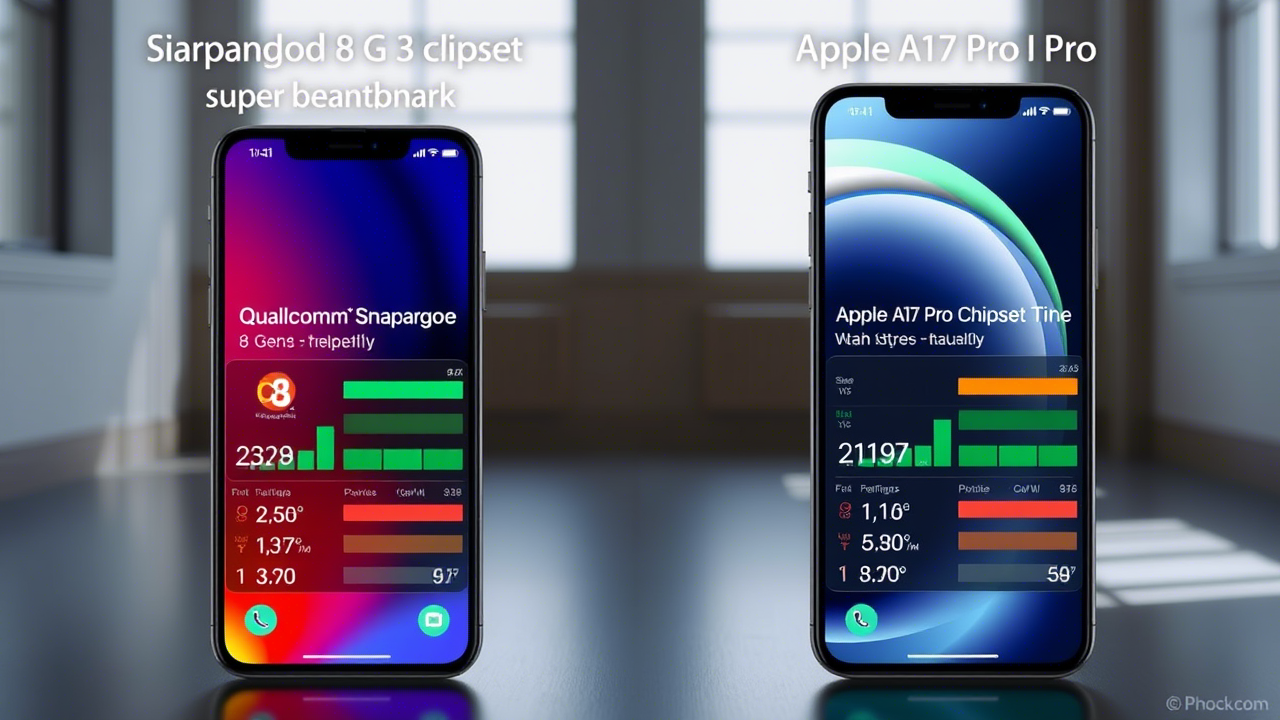
Snapdragon 8 Gen 3 vs. Apple A17 Pro: A Calm Comparison
Snapdragon 8 Gen 3 vs. Apple A17 Pro: A Calm Comparison
In the world of mobile processors, two giants continue to push the boundaries of performance and efficiency: Qualcomm’s Snapdragon 8 Gen 3 and Apple’s A17 Pro. Both power the latest flagship smartphones, offering impressive speed, AI capabilities, and energy efficiency. But how do they really compare? Let’s take a measured look at their strengths and differences.

Performance: Raw Power vs. Optimization
The Snapdragon 8 Gen 3 is built on a 4nm process (like its predecessor) but introduces a new 1+5+2 core configuration:
- 1x Cortex-X4 (Prime core @ 3.3 GHz)
- 5x Cortex-A720 (Performance cores @ up to 3.2 GHz)
- 2x Cortex-A520 (Efficiency cores @ 2.3 GHz)
This setup emphasizes multi-threaded performance, making it ideal for demanding tasks like gaming and multitasking.
On the other hand, the Apple A17 Pro uses a 3nm process, a first for smartphones, allowing for better efficiency. Its 6-core CPU includes:
- 2x high-performance cores (up to 3.78 GHz)
- 4x efficiency cores
Apple’s strength lies in its tight hardware-software integration, meaning the A17 Pro often feels smoother in real-world use, even with fewer cores.
Benchmark Insights
- Geekbench 6 (Single-Core): A17 Pro leads (~2900 vs. ~2300 for Snapdragon)
- Geekbench 6 (Multi-Core): Snapdragon 8 Gen 3 catches up (~7200 vs. ~7500 for A17 Pro)
- GPU Performance: Apple’s 6-core GPU with ray tracing is strong, but Snapdragon’s Adreno 750 is highly competitive in sustained gaming.
AI and Machine Learning
AI is a major focus for both chips:
- Snapdragon 8 Gen 3 introduces a Hexagon NPU with improved AI processing, supporting on-device generative AI models.
- A17 Pro includes a 16-core Neural Engine, accelerating machine learning tasks like camera enhancements and Siri.
While benchmarks differ, both excel in AI—Qualcomm leans into open AI frameworks, while Apple optimizes for its ecosystem.
Efficiency and Battery Life
The A17 Pro’s 3nm design gives it an efficiency edge, particularly in lighter tasks. However, the Snapdragon 8 Gen 3 has made strides in power management, especially with its split-core architecture.
In real-world use:
- iPhone 15 Pro (A17 Pro) may last longer in mixed usage.
- Android flagships (Snapdragon 8 Gen 3) balance performance and battery well, especially with larger batteries.
Connectivity and Features
- Snapdragon 8 Gen 3 supports Wi-Fi 7, Bluetooth 5.4, and 5G mmWave/sub-6 GHz.
- A17 Pro sticks with Wi-Fi 6E and Bluetooth 5.3 but integrates seamlessly with Apple’s ecosystem.
Final Thoughts
Choosing between these chips depends on your priorities:
- For raw peak performance and gaming: Snapdragon 8 Gen 3 is a beast.
- For efficiency, single-core speed, and ecosystem integration: A17 Pro shines.
Both are exceptional—neither will disappoint. It’s a reminder of how far mobile silicon has come, quietly powering our daily lives with remarkable sophistication.